What is this new devilry?
The Frankenstein Chronicles—the ITV Encore production starring Sean “They have a cave troll” Bean currently streaming on Netflix—is exactly what I wish all grimdark fiction would be, and I wish more writers would take a page or two from its book. I may be a high fantasy-loving Tolkien nut, but I’ve also been a fan of horror since forever. The more gothic, the better; the more supernatural, the better. And so, as a period crime show with supernatural elements, The Frankenstein Chronicles is precisely my cup of cold and galvanized tea.
The show is NOT, as other reviews have misguidedly stated, a reimagining of Mary Shelley’s Frankenstein, though I wouldn’t be surprised if Netflix or its producers have marketed it as such to help draw people in. Still, this isn’t a drawback. It’s a selling point, as far as I’m concerned, in an age so full of reboots and rehashed past works. Here, then, is my largely spoiler-free review.
Calling this series a reimagining of Frankenstein would be like saying Ready Player One is a reboot of all the properties it cheaply references. See, Frankenstein’s monster is not a character here, nor is Victor Frankenstein. It’s not their story. Mary Shelley herself is a character, though, and even in the plot, her famous book has already been out for almost ten years. It’s known, but not by everybody. When the protagonist seeks out a copy, his assistant finally tracks one one down. “I’m sorry it took so long. I had to go to three booksellers.”
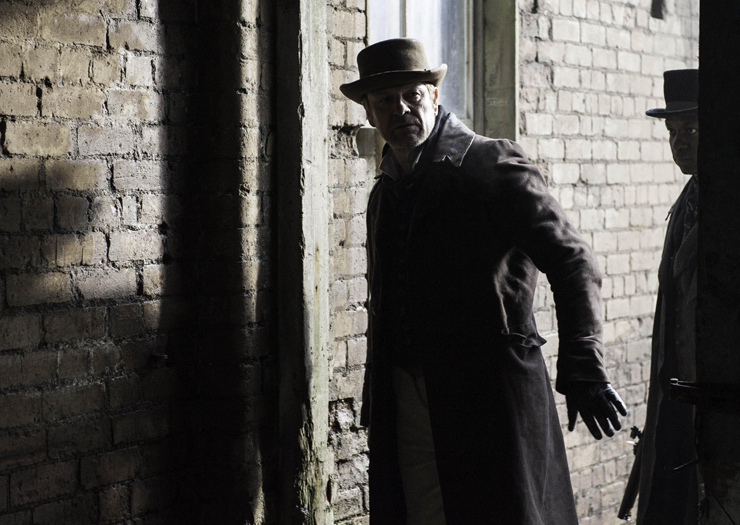
Here’s the set-up: It’s 1827 England. Former soldier John Marlott is now a member of the London police (a river cop). While doing his job taking down thieves and smugglers and so on, he comes across a gruesome sight. A body has washed up on the banks of the Thames—a child’s body—with stitches at the joints. And when Marlott examines the corpse there in the mud… it twitches, just for a moment. Which of course only he sees.
When it turns out to be made of the parts of eight different children, all sewn together into one “composite,” things get even more disturbing.
Marlott is assigned to the case by Sir Robert Peel, England’s Home Secretary (who in real life would go on to become Prime Minister) because the “creature” means political controversy. Who made this monstrosity and why? Is it the work of a deranged lunatic, or does it have something to do with the Anatomy Act that some, like Peel, are trying to push through Parliament—a law that would allow physicians to study and experiment with any bodies supplied to them, not just those who went to the gallows. The act threatens to put resurrectionists (i.e. grave robbers) out of business. Perhaps the blasphemous composite, being the parody of a surgeon’s work, is the handiwork of someone trying to discredit those who would advance modern medicine?
Then people start dying, and the deaths begin to become known as “the Frankenstein murders.”
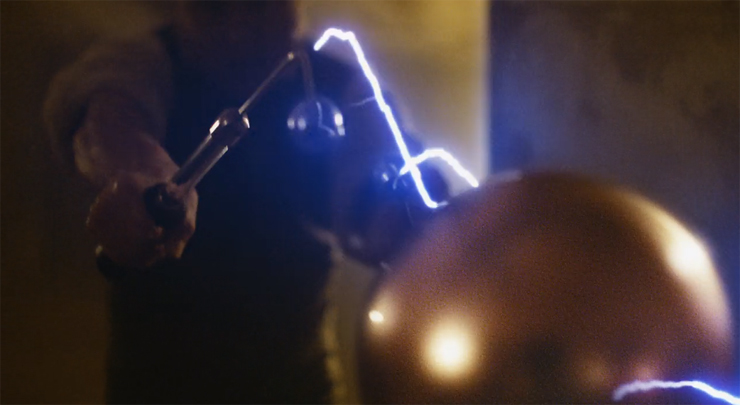
So why Frankenstein? It’s supposed that Mary Shelley’s book was inspired by an actual experiment involving galvanism, and that she herself bore witness to it—and moreover, that her book may have helped to influence, in turn, the actions of this story’s mysterious villain(s). Frankenstein, the novel, is just our starting point, a device from which to toss associated themes into the stew: life, death, science, godliness, godlessness, body snatching. And the possibility of reanimating of dead tissue.
All of this, and Sean Bean, too! Of course, he’s great as Marlott. And he stays alive episode after episode—that alone is worth tuning in for, isn’t it? We all like seeing Sean Bean breathing, don’t we? Now, does he remain alive to the very end? Well, you just need to watch and find out (and not have it spoiled for you, seriously). He’s perfectly cast for this. For a little while his acting seems a bit restrained, until his character’s investigations get more and more personal. He looks older and a bit tired, sure, but that fits John Marlott. He’s a jaded soldier who has lost his wife and child, for which he blames himself. Marlott’s a man of ragged faith who feels that God has abandoned him, but he’s still trying to do right. Everything else about this show tends to look rather bleak—bleak but compelling, with a tiny thread of hope to grasp at. That’s my grimdark. If everyone is irredeemably awful through and through, what’s the point?
Honestly, all the acting is great. I recognized quite a few faces from the all-too-brief runs of Home Fires, The Bletchley Circle, and other solid British dramas. I suppose the only thing that could have made The Frankenstein Chronicles perfect would be the inclusion of Downton Abbey’s Mr. Carson (Jim Carter) somehow. But that’s just me getting greedy.
What else is great about this show? Well, here’s an incomplete list of stuff in no particular order:
(1) The Roger Goula soundtrack is understated and delightfully melancholic. The intro is visually and musically lustrous. That zither! Or is it a hammered dulcimer?
(2) There’s a vibrant streak of diversity in the cast. Nineteenth-century England is normally depicted as white as can be, but there are characters of color—good and bad—in this show. As well there should be. At this point in history, the slave trade was being abolished left and right in different regions, and London also had its share of immigrants. In any case, I absolutely love the character of the constable Joseph Nightingale, played by relative newcomer Richie Campbell, and his entire story arc. He’s someone whose honor and basic human decency you can hold onto when the story otherwise gets dark.
Nightingale signs on to assist John Marlott, who is initially rather dismissive of him. But a kind of friendship takes hold by the end of Season 1 that’s worth remembering for Season 2. All along the way, the two of them have run-ins with street criminals, kidnappers, and cutthroats as they peel back the layers of crime that might just be traced to high places.
(3) The women in the cast are all fantastic, starting with Anna Maxwell Martin, who plays Mary Shelley. With their accents and vocal chops, I’d probably enjoy listening to any one of these actresses read an audiobook of practically anything—phone books, Russian novels, the Handbook for the Recently Deceased, *actual stereo instructions*…they’d make it work. Vanessa Kirby (I guess she’s in The Crown also?), who plays the wealthy Lady Jemima Hervey, and Maeve Dermody, who plays seamstress Esther Rose in Season 2, are memorable as well.
(4) This isn’t CSI: Westminster. It’s the 1800s. Forensic science is crap, but Marlott is resourceful without being unbelievable about it. Which brings me to…
(5) John Marlott is no Sherlock. We can relate to him. He’s not brilliant; he stumbles and makes mistakes and guesses wrong. He doesn’t always win. And he’s no Jack Bauer: he might have been a soldier once (“95th Rifles, 2nd Light Battalion”), one who fought at Waterloo, but his fighting days are distant now. He gets banged up easily. And he’s not armed to the teeth. He only sometimes has a pistol, when he gets permission to carry one, and it can (and does) misfire. Because 1827.
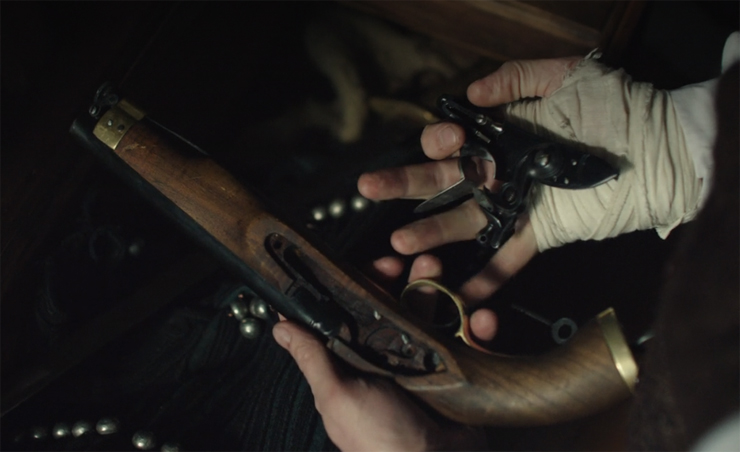
(6) The antagonists are enterprising, but they’re often as limited as the hero. They don’t have an army of minions that Marlott has to wade through. Absolutely no one knows kung fu. The bad guys’ chief defense is the good guys not knowing who they are.
(7) Time is against John Marlott in unexpected ways. On top of trying to find a missing girl and preventing further murders, he suffers from the return of a disease that he contracted on his last military campaign—and which he’d unwittingly passed to his infant daughter. (Hence his enduring grief.) And now it’s getting worse.
(8) There’s a troop of carnies in Season 2, featuring an assortment of performers and freaks (I’m a softy for carnival performers, always)—and they’re there to put on a production of Shelley’s Frankenstein, though we only get a few glimpses of that.
(9) There’s a creepy clockwork automaton in Season 2 that’s set to motion with musical box accompaniment. It’s not a major plot point, more of a thematic symbol. She’s put on display at a decadent party hosted by a wealthy and exceedingly haughty German aristocrat. Win-win-win. Gothic horror, man. It’s so good.
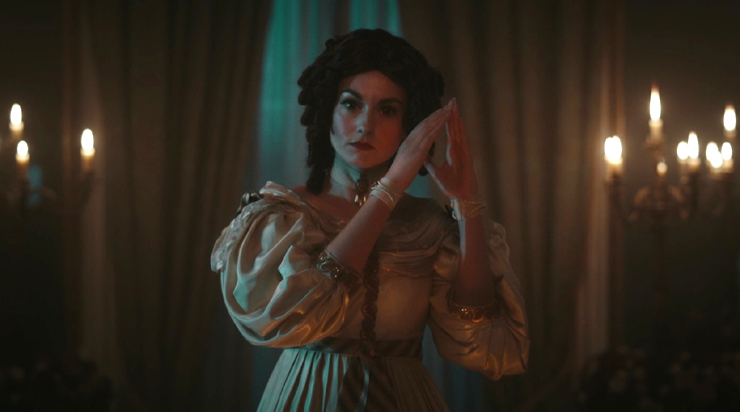
(10) The trappings! Flintlock pistols. Horses and carriages. Bowler hats, frock coats, gloves, canes. It’s like A Christmas Carol, but replace the all the street festivities with gruesome murders and Scrooge’s redemption with Marlott’s need to find out who’s killing people and trying to reanimate them. There’s grime covering everything where the downtrodden live, and candles freakin’ everywhere in the abodes of the wealthy.
(11) Ghosts.
So there you are. Is The Frankenstein Chronicles perfect? Nah, there are things I could nitpick. For example, I think the show relies a little heavily on visions and dream sequences, as a lot of horror does. But at least here they’re not just random and and ambiguously thrown in. John Marlott treats his affliction with mercury, which induces hallucinations in addition to not being conducive to good health. And that’s just Season 1. Season 2 supplies a very different reason for his seeing things. Plus I’m sure the show takes a few licenses with history—but it did have me looking up things I’d never researched before: Robert Peel, the real life Anatomy Act, actual galvanism, British soldiers who fought in the Napoleanic Wars. So kudos for that.
My advice to you, if you’ve not already seen it, is to avoid spoilers. The first episode, “A World Without God,” is pretty rich with exposition—especially the first 15 minutes—so pay attention. From there on the pacing becomes more manageable. There are only two seasons (so far?) and the gears do shift considerably between them. At first I wanted Season 2 to bring back more elements from Season 1 that seemed to be unresolved, but then I became invested in the new plot (and the Season 1 stuff did come back, eventually). All in all, this show’s two directors, its writers, its actors, and its whole production team have done a fine job.
Grimdark is usually defined as being dystopian, violent, and amoral. This show embodies nearly all of that—the poverty, the corruption, the sheer loss of life—but there is a sense of honor carried throughout by a few characters. The narrative doesn’t draw too many conclusions for us. Is trying to reanimate the dead an act of science, or is it blasphemy? Where does one draw the line between advancing medicine and playing God? I personally want to see more of The Frankenstein Chronicles, or at least more things like it.
Also, it sure as heck beats the pants off any other grimdark TV shows Sean Bean may have starred in—and mercifully departed from. And on that note, I’m out!
Jeff LaSala, who works for Tor Books, met Sean Bean once at a special “Behind the Scenes of Middle-earth” event a few months before The Fellowship of the Ring premiered. In the men’s room afterwards, Bean, goofing off with Orlando Bloom and Elijah Wood, said “Speak ‘friend’ and enter” to a closed toilet stall. I guess…I guess you just had to be there. Jeff is sometimes on Twitter.




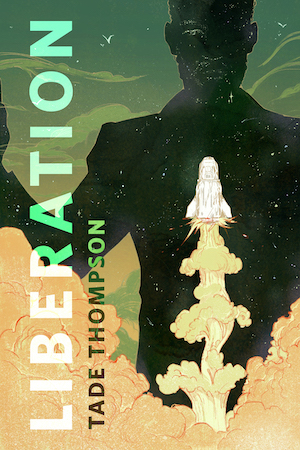





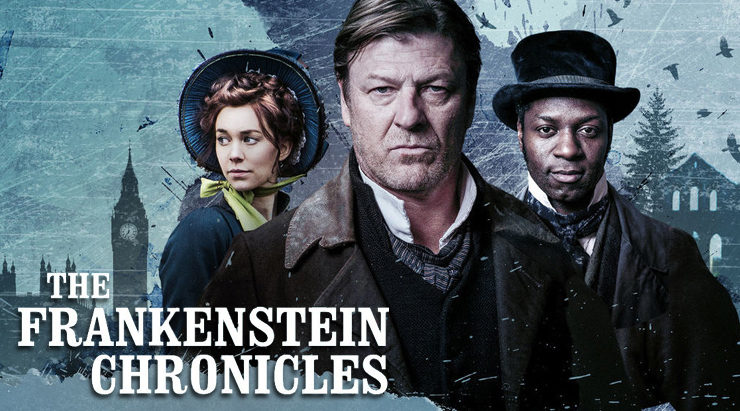
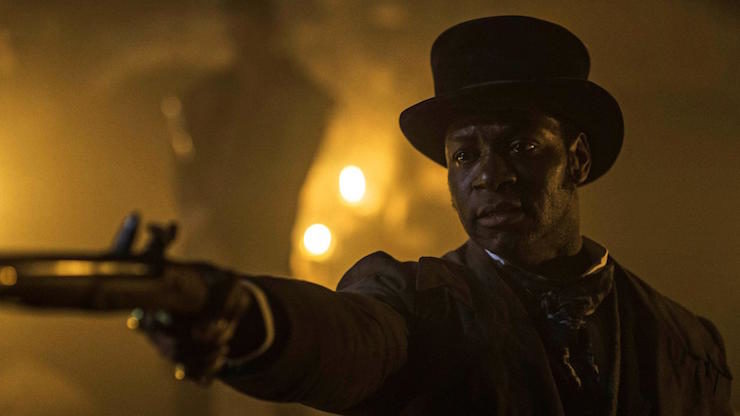
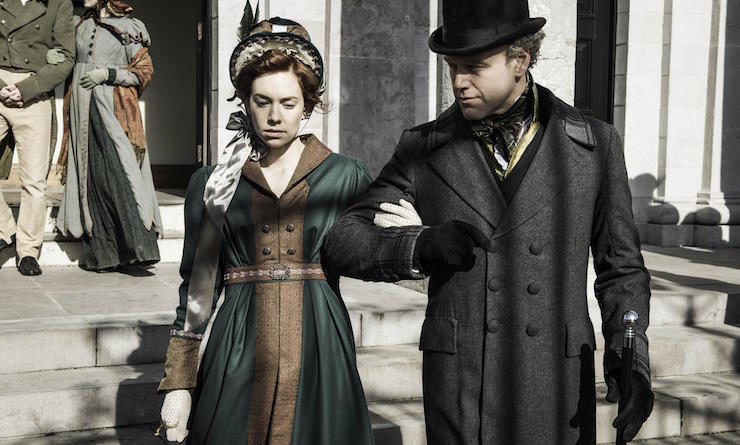
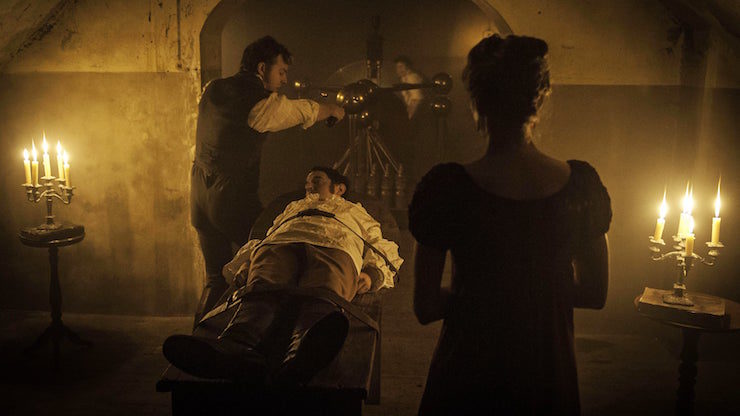
I can take or leave “grimdark”. I have nothing against it, but it’s got to have something more to get me interested: and historical fantasy is a big plus! (And a living, breathing, Mr. Bean). But I want the history to be believable. “Plus I’m sure the show takes a few licenses with history—but it did have me looking up things …” It’s fantasy, so it’s allowed to take licenses, but they need to fit. My very first thought was “flintlocks? Isn’t it late for them?” Well, apparently, no. The percussion cap was introduced in 1820, so it’s highly probable that most pistols were still flintlocks in 1827. And I learn something new!
“95th Rifles, 2nd Light Battalion”
That’s a Sharpe reference yes?
https://en.wikipedia.org/wiki/Sharpe_%28TV_series%29
@1: To be fair, that misuse of the word (flintlock), if it is indeed anachronistic, may be on me. They don’t get that technical in the show as far as identifying firearms. I’m not sure…I’ll try and research some more!
Sound interesting, but is it too graphic? I tried to watch “Penny Dreadful” and it disturbed me.
I see you are a period drama fan too! Anna Maxwell Martin was in “North and South”
Incredible anecdote about Sean Bean!
@@@@@: 4, good question. There is gore, but it’s sporadic rather than constant. More dead bodies and macabre scenes than straight-up bloody killings. I’ve only seen one episode of Penny Dreadful, so I can’t speak to the comparison with authority, but I suspect that’s more extreme than this. This show’s got some shocks but they don’t feel gratuitous. For example, there’s one disturbing scene when a doctor shows John Marlott a patient of his who’s in an advanced state of his disease, and it’s hard to watch for a few seconds. But in all cases you basically get Sean Bean’s face first, reacting (warning you). He’s as horrified as we would be. And they’re brief enough; they’re supposed to be horrifying.
There’s another moment when he shoots at someone and they just go down fast. No linger closeups of where that bullet is going exactly—as we would see, in gratuitous detail, in some other shows.
@5 Thanks for answering. I think I will give it a go. I can stand standard police procedural blood and violence but no slasher violence.
Hah. Although police are involved, anything “procedural” about it gets tossed right out the window quickly. :)
Remember, it’s only a spoiler if Sean Bean doesn’t die…
This is the first time I’ve heard of this show! Sounds right up my alley. I’ve got the night free, so maybe I’ll check it out.
This has been on my Netflix list to watch since it first popped up on there, I just haven’t had the chance to watch it, yet. Sounds right up my alley, though.
Yay. I hope you guys enjoy it!
@1:
I can’t actually see it written that way without thinking of…
Who I’m a big fan of, as well. But a very different Fellowship that would have been.
@@.-@, In Penny Dreadful the violence sometimes seemed like spackle to cover an often nonsensical story. In The Frankenstein Chronicles the violence exists because it’s part of the story. Watched both. Enjoyed both. TFC is a much better program.
I and my girlfriend had a lot of hopes about this, when we met it on netflix it seemed exactly the kind of stuff we were in the mood for.
Unluckily it started having some quite over-dramatic acting from the beginning (“Judaaas!”), and while we had a lot of fun commenting the most egregious moments, I don’t think it was the fun the creators were going for.
We finished the first season but were not especially motivated to try the second one. Maybe one day, when we will be in the right mood.
<spoiler>
The last drop was when about at the beginning I joked that a Frankenstein series was the right show to avoid the GoT problem of having your Sean Bean die, and having to do without him subsequently… when it progressively became clear where they were heading, the groans abounded… (Roll over to read)
@12: Was really hoping we could avoid spoilers here. Especially the big ones. Also, I think what you’re saying is going to be misleading.
In any case, the developments at the end of Season 1 play out well in Season 2, I felt.
@2 Definitely a Sharpe reference.
For those who’ve not seen it, Sean Bean got famous in the UK mainly from from playing Richard Sharpe, in the TV adaptation of the historical fiction novels by Bernard Cornwell. The novels are worth a read, and the TV show is pretty good, although their lack of budget shows in some of the (tiny) crowd scenes.
Basically, to a certain group of people, Sean Bean will always be Sharpe.
(There’s a fun little mention of it in Stephen Brust’s latest book Good Guys)
I’m not sure 1827 London really fits my definition of Grimdark: In the Grim Darkness of the moderately distant past there is only… peace and an antislavery campaign?
Not only is it a Sharpe reference, I’m 90% sure the uniform you see him look at in his belongings is Sean Bean’s Sharpe jacket. If I remember correctly he said he kept the coat and the boots. I almost wonder if they wrote that line just because he had the jacket.
@14 – When Fellowship of the Ring first came out, I saw it in my local cinema with a group of friends. One of said friends brought along a cousin from Seattle who was staying with them for Christmas.
Poor bloke got so confused when, after Boromir cut his finger on the shard of Nardsil and said “Still sharp…” the entire audience cheered.
Thanks for the article Jeff – I’ve just added this to my Netflix list.
I’m one of those Sharpe obsessives – love the books and still watch the TV series even now.
You know, I’ve never seen Sharpe. I’ll look to remedy that sometime. But ahh,before Sean Bean was Richard Sharpe, he was a gardener prince in an episode (“The True Bride”) of Jim Henson’s The Storyteller. In that, he’s the eye candy, the young man captured by a troll that the heroine must rescue (like in all fairy tales).
I feel like everyone should know this.
I had not realized that Sean Bean was in The Storyteller!
My first real encounter with him was probably in Ronin where he [SPOILER] doesn’t actually die. Although I would’ve seen him earlier in GoldenEye where he [NOT A SPOILER] does die.
A little late to the party, but worth noting that the reporter introduces himself as Boz and says that it is his pen name. Boz was the pen name of Charles Dickens who was a reporter, and I believe was the one who first referred to the Pye Street Area around Westminster Cathedral as the Devil’s Acre. However I think his first published work was not until 1830s and Pye Street slum clearances didn’t take place until the 1850s. I really enjoyed the Frankenstein Chronicles. I liked it’s cleverness and was carried along by a good pace. Oh and I spotted that Sharpe references and laughed when Bean’s character laid out the two miniatures of his wife and child and then place a ring between them – one ring to bind them?? I hope there will be a series 3.
@11 So much squandered potential in “Penny Dreadful”. It had a breathtaking cast and good bones and then went…
Have just seen the last episode of season two of the Frankenstein Chronicles and have just loved the back to back episodes on ITV. I am so glad that I started watching it. It’s been fantastic. I’m hoping for a series three now. Well done to all the cast and production team for a fabulous TV experience.
Lindsay Schofield.